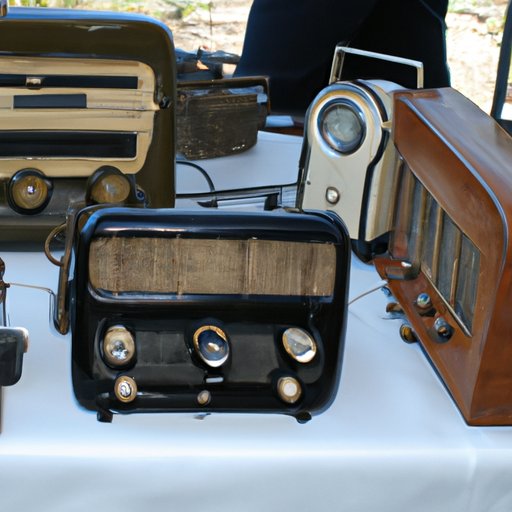Introduction
Radios have been around for more than a century, with their invention revolutionizing communication and transforming society in the process. From early designs to modern technology, radios have come a long way since their inception. This article will explore the history of radio and its impact on communication.

A Historical Look at the Invention of Radios
In the late 19th century, Guglielmo Marconi is credited as one of the first to develop the technology behind radio transmission. Marconi’s experiments with wireless telegraphy led to the development of the first practical radio systems. According to Marconi, “I am convinced that the wireless art offers greater possibilities than any other invention or discovery ever made.”
The invention of the radio was quickly followed by the invention of the microphone, which allowed people to transmit audio signals over the airwaves. The first public demonstration of radio broadcasting took place in 1906 by Canadian inventor Reginald Fessenden. Fessenden’s broadcast included music and voice transmissions, which had a profound effect on the development of radio technology.
By the 1920s, radios had become a popular form of entertainment. Radio stations began broadcasting popular music and news, allowing people to access information from all over the world. As radios became more widely available, their use expanded beyond just entertainment. During World War II, radios were used to communicate vital military information.
How Radios Evolved Over Time
Radios have evolved significantly since their invention. Early radios were large and bulky, requiring complex circuitry and several vacuum tubes to operate. Modern radios are much smaller and more efficient, using transistors and integrated circuits. The most significant change in radio technology has been the transition from analog to digital broadcasts.
Digital radio technology has allowed for higher quality sound, increased range, and more features such as pre-set stations and song tagging. Digital radio also allows for more data to be transmitted, such as traffic and weather updates. These advancements have made radio an even more powerful tool for communication.

Exploring the Technical Aspects of Radio Invention
Early radios relied on mechanical components such as capacitors and inductors to create oscillating electrical signals. These signals could then be transmitted over the airwaves. Modern radios use semiconductor components such as transistors and diodes to generate and amplify these signals.
Radio waves are used to transmit information from one place to another. In order for this to happen, a transmitter must be used to convert electrical signals into radio waves. The receiver then converts these radio waves back into electrical signals. With the development of digital radio technology, this process has become much more efficient.
Modern radios also rely on computer algorithms and software to improve signal reception and reduce interference. This technology has enabled radios to become more reliable and provide clearer audio.
Conclusion
The invention of the radio revolutionized communication and transformed society. From its humble beginnings as a simple device for transmitting audio signals, the radio has evolved into a powerful tool for transmitting data and information. As technology continues to advance, radios will continue to play an important role in communication for years to come.
(Note: Is this article not meeting your expectations? Do you have knowledge or insights to share? Unlock new opportunities and expand your reach by joining our authors team. Click Registration to join us and share your expertise with our readers.)
